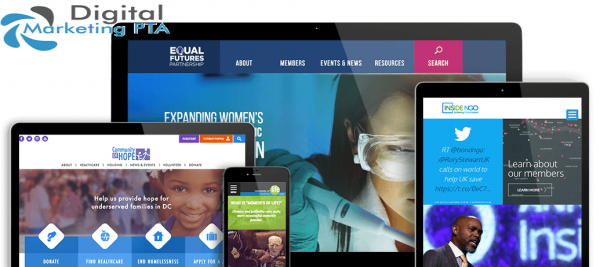Best Practices for Producing User-Friendly Web Design
In the ever-evolving landscape of web design, establishing an user-friendly user interface is paramount for involving audiences and driving conversions. As we discover these fundamental concepts, it ends up being clear that efficient customer experience style not just fulfills user assumptions yet likewise sets the phase for much deeper interaction.
Simplify Navigation
A streamlined navigating system is essential for boosting individual experience on any website. Effective navigating enables users to locate the info they seek swiftly and easily, thus decreasing irritation and enhancing the likelihood of interaction. A clear layout that classifies material logically is extremely important; individuals should with ease recognize where to click for certain information.
Using an easy high-level navigation bar, matched by drop-down food selections for subcategories, aids in keeping an organized structure. It is important to limit the variety of main navigation web links to avoid frustrating users; typically, 5 to 7 options are ideal. Additionally, utilizing descriptive tags enhances clearness, enabling users to determine the web content of each section at a look.
Integrating a search feature further enriches the navigating experience, specifically for content-rich websites. When looking for details details, this feature empowers individuals to bypass standard navigating courses. Additionally, regular layout elements across all pages enhance familiarity, allowing users to navigate with confidence.
Optimize for Mobile

Firstly, adopt a receptive style method that automatically readjusts the format and material based upon the screen size. This adaptability makes certain that customers have a constant experience across tools. Next off, prioritize touch-friendly user interfaces by ensuring web links and buttons are easily clickable, decreasing the requirement for zooming.
Additionally, consider the relevance of concise material presentation. Mobile users usually seek fast info, so employing methods like collapsible food selections or accordions can enhance functionality without frustrating the user. Additionally, make certain that fonts are readable, and image dimensions are optimized for faster loading.
Last but not least, test your internet site on various smart phones and operating systems to recognize prospective concerns. By dealing with these elements, you will produce an instinctive mobile experience that maintains customers involved and urges them to explore your offerings additionally - Web Design Pretoria. Prioritizing mobile optimization is crucial for attaining an easy to use internet design in a progressively mobile-centric globe
Enhance Loading Rate
Packing speed is a vital variable that can significantly impact user contentment and engagement on a site. Researches indicate that users expect pages to pack in 2 secs or much less; yet threshold, the probability of desertion raises significantly. As a result, optimizing packing rate is important for retaining site visitors and enhancing total website efficiency.
To boost packing speed, a number of finest practices must be implemented. In addition, leverage browser caching to keep duplicates of data in your area, enabling faster load times for returning visitors.

Usage Constant Layout Elements
Developing a natural visual identity is critical for boosting customer experience on an internet site. Constant layout elements, including color plans, typography, switches, and layout frameworks, produce a unified appearance that aids customers navigate effortlessly. When individuals run into acquainted patterns and designs, their cognitive tons is decreased, allowing them to concentrate on web content as opposed to understanding differing style elements.
Using a standardized color scheme enhances brand acknowledgment and cultivates a psychological connection with users. Similarly, keeping consistent typography-- such as font styles, dimensions, and weights-- makes certain readability and adds to a refined appearance. Additionally, consistent switch designs and interactive aspects guide customers without effort through the website, improving usability.
Moreover, a natural layout aids develop an organized circulation of information, making it easier for customers to locate and digest material. Each page needs to show the very same style concepts to avoid confusion and disorientation.
Prioritize Access
A natural visual identification not only boosts navigation but likewise sets the phase for prioritizing accessibility in website design. Ease of access ensures that all individuals, consisting of those with specials needs, can connect and navigate with a website properly. To achieve this, internet developers should abide by developed guidelines, such as the Internet Material Ease Of Access Standards (WCAG)
Implementing functions like alt message for images, keyboard navigability, and ideal color contrast can significantly boost the individual experience for people with visual, auditory, or cognitive problems. It is essential to utilize semantic HTML to framework content rationally, permitting assistive modern technologies to interpret and communicate details accurately to users.
Additionally, giving numerous means of engagement-- such as text options for audio and visual web content-- can satisfy link varied customer needs. Normal use screening with individuals that have impairments can discover prospective barriers that may not be promptly evident throughout the layout stage.
Ultimately, focusing on availability not just abides by legal requirements yet also widens the possible target market, promotes inclusivity, and improves overall website usability (Web Design Pretoria). By installing accessibility right into the layout procedure, designers can create a more fair electronic landscape for everyone
Conclusion

As we discover these foundational principles, it comes to be clear that reliable user experience style not just fulfills customer expectations but likewise sets the phase for deeper involvement. Mobile individuals commonly seek fast details, so utilizing methods like collapsible food selections or accordions can boost use without overwhelming the user. When users come across acquainted patterns and designs, their cognitive tons is lowered, permitting them to concentrate on web content instead than analyzing differing layout these details aspects.
In recap, implementing best practices for user-friendly web design significantly enhances the overall user experience. Adhering to these guidelines fosters a favorable partnership in between individuals and digital platforms, ultimately advertising customer contentment and retention.